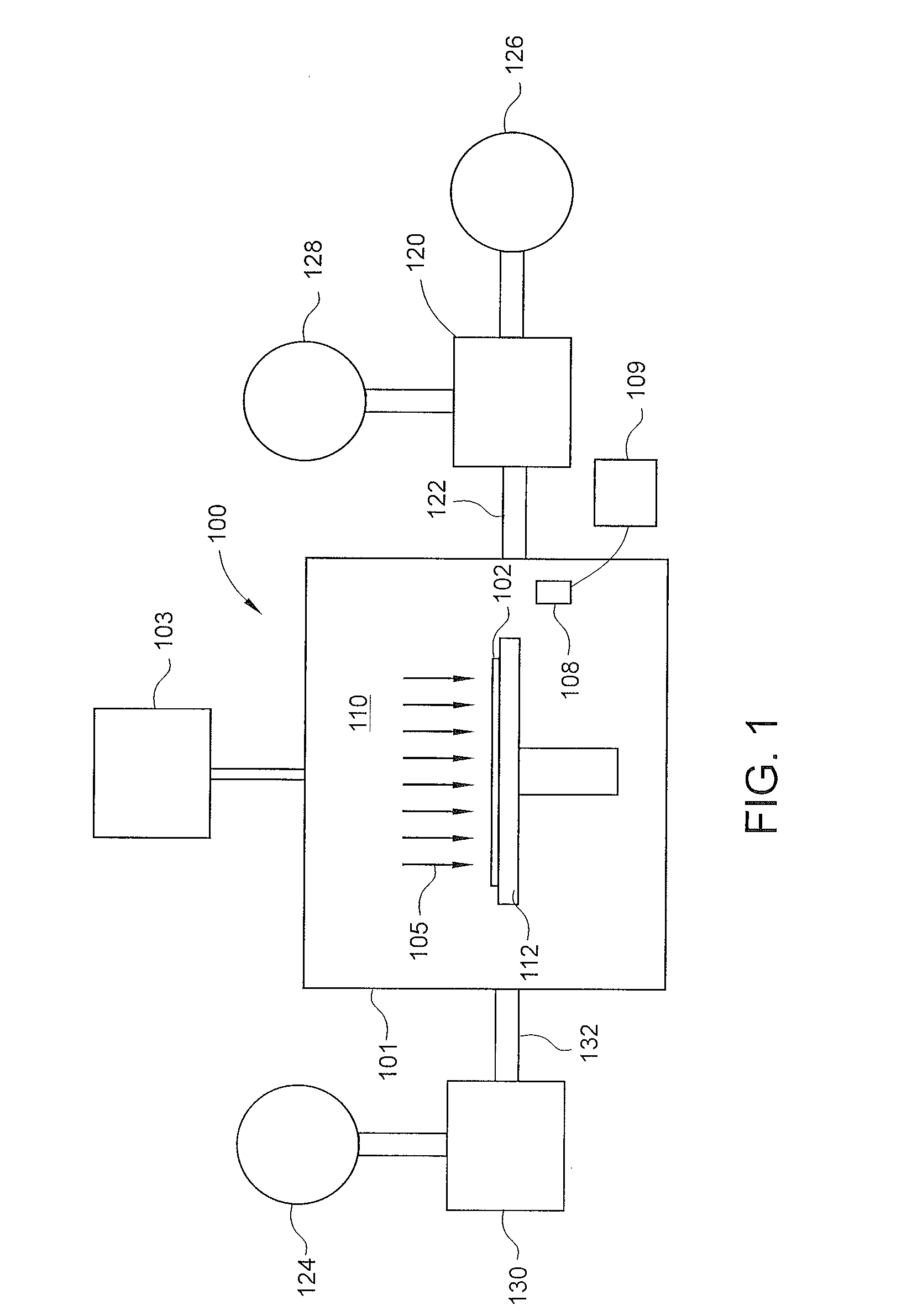Apparatus and method for selective oxidation at lower temperature using remote plasma source
a plasma source and apparatus technology, applied in electrical apparatus, ohmic-resistance heating, ohmic-resistance heating details, etc., can solve the problems of many of the next-generation devices being seriously damaged, and achieve the effect of reducing metal surfaces
- Summary
- Abstract
- Description
- Claims
- Application Information
AI Technical Summary
Benefits of technology
Problems solved by technology
Method used
Image
Examples
Embodiment Construction
[0016]Embodiments of the present invention generally relate to methods of selective oxidation of silicon. Embodiments more specifically relate to the selective oxidation of silicon and the selective reduction of tungsten to remove native oxides.
[0017]The selective oxidation of Si over tungsten is an important process to repair silicon oxide damage caused by ion implantation or reactive ion etching (RIE) around tungsten gate electrodes on SiO2 dielectric in the advanced CMOS devices. The embodiments described here can be employed to selectively oxidize silicon over non-metals in a rapid thermal processing (RTP) chamber or thermal furnace by using a combination of remote plasma and thermal processing.
[0018]Without intending to be bound by theory, the induced Gibbs free energy change during the oxidation of silicon is more than that during oxidation of tungsten, therefore resulting in selective oxidation of silicon over tungsten. In related art oxidation processes, the reaction involve...
PUM
 Login to View More
Login to View More Abstract
Description
Claims
Application Information
 Login to View More
Login to View More - R&D
- Intellectual Property
- Life Sciences
- Materials
- Tech Scout
- Unparalleled Data Quality
- Higher Quality Content
- 60% Fewer Hallucinations
Browse by: Latest US Patents, China's latest patents, Technical Efficacy Thesaurus, Application Domain, Technology Topic, Popular Technical Reports.
© 2025 PatSnap. All rights reserved.Legal|Privacy policy|Modern Slavery Act Transparency Statement|Sitemap|About US| Contact US: help@patsnap.com



